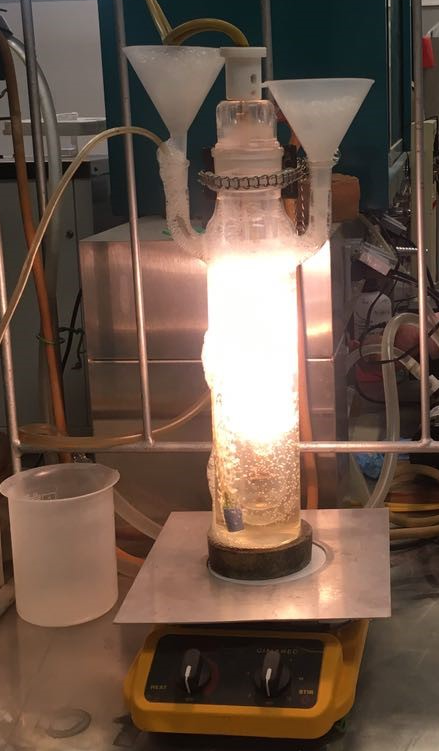 |
|
To reverse the negative impacts on water resources caused by industries, the advanced oxidation processes (AOP) have been developed as a novel alternative for the treatment of effluents. Among the most used processes is photocatalysis consisting of the acceleration of a photoreaction using a catalyst.
This work evaluates the photodegradation of organic, inorganic oxidizable compounds and the inactivation of microorganisms in municipal wastewater, from the effluent of a Wastewater Treatment Plant (WWTP). The efficiency of two light sources, a UV lamp and solar radiation, and two catalysts synthesized through the sol-gel method, TiO2 with a crystallite size of 20 nm and ZnO/TiO2 with a crystallite size of 8 nm, were compared. The results obtained showed that photocatalytic treatments reduced TSS levels by 91%, COD by 69%, and BOD5 by 73%, in the best of cases. Besides, 10 of the 11 organic compounds present were degraded, most of which are of hospital origin. It was also possible to inactivate some microorganisms such as Enterobacter, pseudomonas, and Klebsiella, in the order of 3.6x108 CFU to 1.63x104 CFU in the best of results.
It was found that both photocatalytic processes represent a viable option for polishing the treatment of wastewater discharges from conventional WWTPs. However, the ZnO/TiO2 catalyst with solar radiation showed the best result.
Keywords: municipal wastewater, photodegradation, solar radiation, UV radiation, ZnO/TiO2.
|
|
 |

